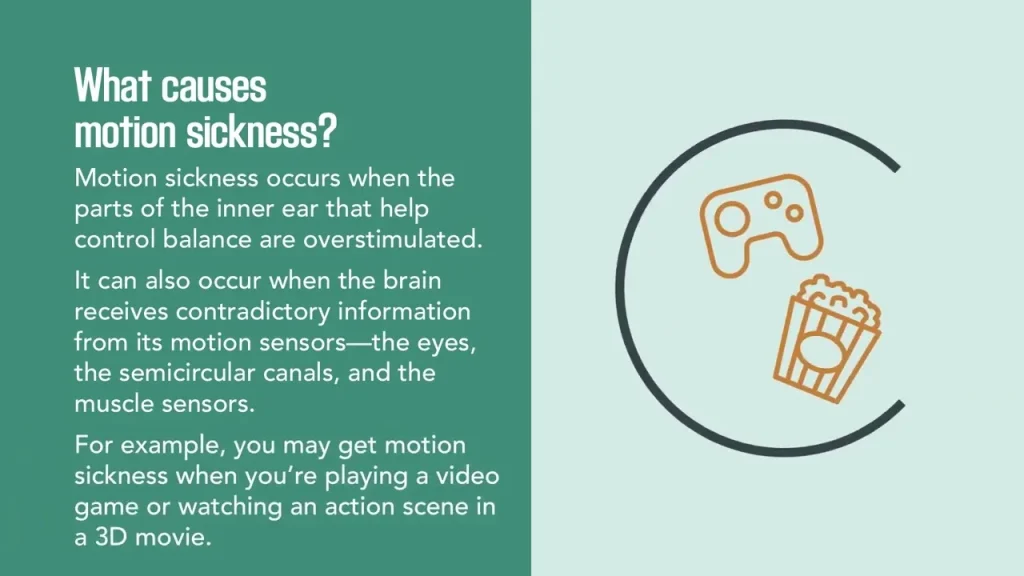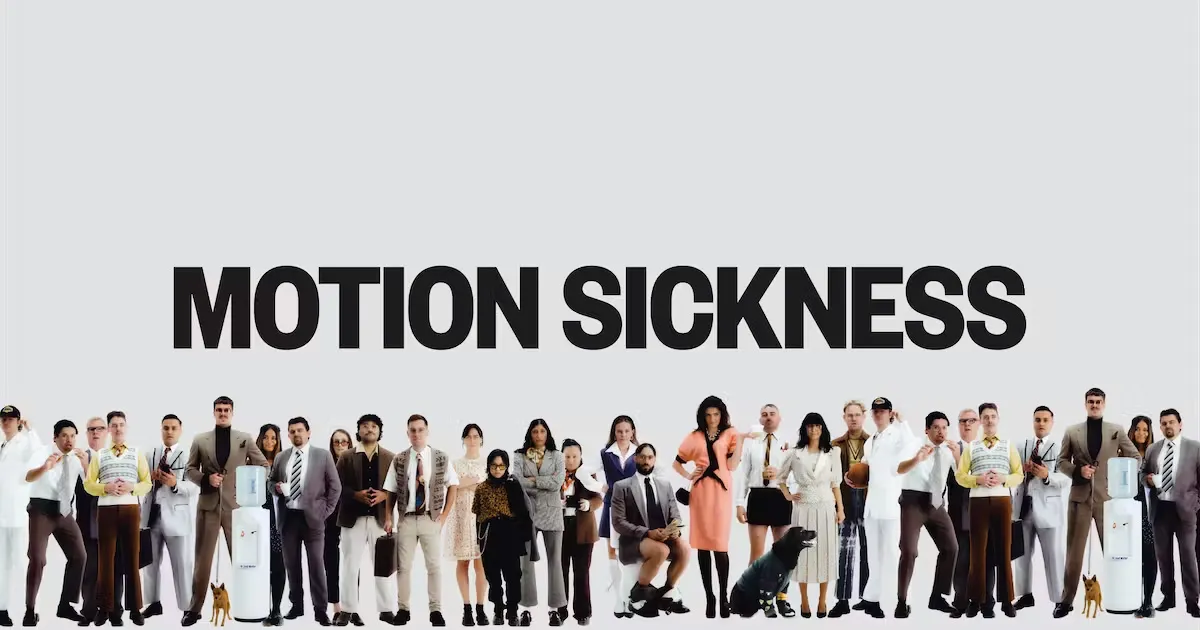By this point, any global traveler would probably have heard of motion sickness – a condition that affects people while traveling in a car, plane, or a boat, or even when “traveling” through virtual environments. Once defined, it is characterized by nausea, dizziness and discomfort. It develops when the inner ear, eyes and body send conflicting signals to the brain.
Some people may find these symptoms bothersome but manageable, others will be sick enough to impact their ability to travel or do daily activities. Thankfully, different therapies including pharmacological and non-pharmacological measures are available to treat or lessen the symptoms of the illness.
What is Motion Sickness?
Motion sickness results when visual and vestibular (inner ear) stimuli is mismatched. For instance, in a car, the inner ear perceives movement, but if the eyes are focused on a book, there isn’t any visual motion. This is the cause of the feelings of uneasiness and discomfort, as well as pushing the boundaries by developing nauseating feelings, feelings of spinning, or even causing vomiting.
There are different levels of motion sickness in which people experience, some quickly sets in when it starts moving while some people will not feel any motion sickness until when they are in extreme conditions like severe bouncing of the aircraft in turbulence or the high rolling of waters.
Causes of Motion Sickness
Contrary to popular belief motion sickness is mainly brought about by a sensory mismatch, this time between the perceptions of the body and the vision provided by the eyes. In slowly moving situations such as sitting in a car or a plane when the inner ear is telling you that you are moving the surrounding environment is still which confuses the brain.
And it further causes a sense of sickness, mild or severe or even none. There are other circumstances for example genetic makeup, hormonal changes or its health that can have motion sickness in varying levels in some individuals than others. Stress, anxiety and some related disorders like migraine, vertigo, etc. also increase the chances of experiencing it.
What triggers motion sickness?
What usually causes it are situations involving motion, which can either be too much or inconsistent, like being on an aircraft that suddenly shakes, being jostled around in a car, or going on a boat with many waves and splashes. In some instances, this is caused by, for example, spending time in a different position such as being spun in circles or riding roller coasters. External factors such as poor air quality, strong odors, or reading while being in motion can make the condition even worse.
Patients who have a history of migraines or have problems with the inner ear are more likely to experience sickness. It’s possible to learn about what causes them, and avoid those things beforehand, for example, keeping still in a position which has the least degree of motion, or looking straight ahead at the horizon.

Risk factors for motion sickness
There are multiple ways in which the risk of this can be heightened. The first and possibly the most important is the age of the person taking the trip; children aged between two and twelve are most at risk of getting sickness, although most grow out of it with age. Also, due to the release of hormones, pregnant and premenstrual women are also on the list of high-risk groups.
In addition, a genetic component may be involved since some individuals may have a family history of motion sickness. Other risk factors include stressful situations, anxiety and being in an unusual setting. Those patients who suffer from associated vestibular illnesses, such as vertigo or labyrinthitis, are at an increased risk for exhibiting a greater degree of sickness than others.
Symptoms of Motion Sickness
Interpersonal motion discomfort is also referred to as motion sickness and the symptoms are that it starts with discomfort and progresses into dizziness followed by feelings of nausea. With time this condition advances into severe sweating, headaches and vomiting. When motion occurs but eyes are still or motion is discerned within the head but eyesight remains static, brain sends signals that trigger these thoughts and a person is left in limbo.
In one case a person will just complain of slight dizziness, while another will have frankly violent bouts of sickness. These symptoms can be either insidious or fairly abrupt in their character. It is most common for the symptoms to stop if you cease the causes of motion sickness, trying to avoid this kind of sickness for long periods is rather unpleasant due to symptoms that may follow after the cessation of the moving stimulus for several hours.
What causes fake motion sickness at home?
Curiously, motion sickness may also take place in the household, especially when dealing with digital screens. Known as simulation or virtual motion sickness, this happens during the action of staring at rapidly changing images and when playing video games. There’s visual motion detected but no bodily motion perceived. Hence the symptoms resemble those of standard traveling sickness.
Fast film cuts or panning cameras, or even a virtual reality (VR) environment can also bring this out. Certain individuals having travel sickness find that they still have motion related discomfort while watching high action shots or making use of VR and thus need to observe breaks and limit time of exposure to such activities.
Motion sickness when stationary
Nausea (when they feel sick) is not necessarily due to violence. This indicates that the notion of motion sickness is a stereotype created for passengers. Some patients, in the first place children, stay still, but because of reading a book in a moving bus, for example, they start feeling sick. This condition can also include visual motion sickness when one experiences discomfort while watching violent films or computer games.
The movement of the eyes is great, while the body movement is quite minimal, leading to this discomfort. From additional short surveys some people may experience these motion sickness states in other conditions, for example when feeling anxious, or having offices which triggers hormonal change of certain kind, in short, lack of motion stimuli.
How is This Sickness Assessed?
It is not refreshing to say that this sickness is not that hard to diagnose. This is usually done based on the self-reported symptoms that arise in certain types of travel or exposure to motion inducing environments. All sorts of evidence come from the patient’s history, and the gauging of the circumstances in which the incapacitating symptoms arise, for example, during car rides, boat rides, or taking a flight.
In some cases, further additional tests may not be necessary unless it is evident that some child is suffering from motion sickness for a prolonged period of time. The tests may include vestibular function tests used to evaluate the balance system within the inner ear structures. A complete diagnosis assists in telling this sickness from other conditions that may arise, for example, IPPV or migraines so long as the symptoms appear to be the same though the underlying pathologies are totally different.

What is the process followed in diagnosing motion sickness?
Generally, a motion sickness diagnosis is based on the patient’s account and its corresponding relationship with a certain set of movements. If the symptoms are major or continue for a long time, the physician may specifically inquire about the characteristics of the movements that induce nausea such as the mode of transport used, the length of the trip and whether there were visual elements present.
If needed, doctors may evaluate balance or stability to create a profile of the workings of the inner ear’s vestibular system. However, if motion sickness is secondary to a condition like vestibular disorder, then more extensive imaging may be needed to account for other diagnoses.
How Do You Control Motion Sickness for Good
Most episodes of motion sickness are short-term in nature but one-off episodes can be controlled and eventually minimized in incidence over time. While a lifelong ‘fix’ may not be possible in all cases, it is reasonably achievable where there are some life style changes, medical and natural therapies that are routinely used.
Where there is chronic motion sickness, further advanced medical embargoes may present other options. The combination of these approaches may enhance the symptoms’ severity and frequency, so that sufferers of motion sickness will be able to travel and perform various activities without being so bothered by discomfort.
Home Remedies or Self-Care Approaches
Some people prefer natural alternatives and self-care measures than being on medication for motion sickness. Among these is ginger, which is widely known to help people who are suffering from nausea with the use of tea or ginger supplements. Peppermint tends to be used in tea or as oil in essential oil and can help soothe the stomach.
Another common alternative and non-invasive treatment is acupressure wristbands that press against the P6 point on the wrist. Drinking fluids, getting a good circulation, and sitting in the least active parts of a car or, the most central part of a boat, tend to be used in controlling symptoms.
Preventive Tips to Avoid Motion Sickness
Preventing motion sickness encompasses some measures which can be done even before the travel. For example, it might help to stay in the part of the vehicle that experiences the least amount of movement, such as the front seat of the car or over the wings in an airplane. Keeping your fiddling hands on the horizon or viewing a fixed object far away helps your brain wet rock.
It is not recommended to read books or look at other figures while travelling since doing this raises chances of experiencing motion sickness. It is also advisable to drink enough fluids and cut down on heavy meals prior to commencing travel. This is because too little water and too much food may aggravate the feeling of nausea.
Surgery For Motion Sickness
However, in circumstances where motion sickness severity interferes with a person’s quality of life, other alternatives such as surgery are at times entertained. Chronic motion sickness can be treated with vestibular surgery, a rare approach involving intervention in the inner ear’s balance system. Further, VRT refers to a more advanced treatment option in which specific activities are done to facilitate the brain in learning how to respond to movement and balance commands more efficiently.
These options are chosen usually where other treatment regimens have not been effective and motion sickness has reached levels where a person’s life and the need for travel or other activities cannot be continued.

The Importance of Nutrition to Avoid Any Incidence
The use of diet helps not only in the avoidance of motion sickness, but also in its treatment. Prior to going on the trip, it’s advisable to have light and bland food such as crackers, toast, and bananas which are simple to chew and do not induce vomiting. On-going spicy, greasy, or sour food should also be avoided, as they may contribute to the symptoms by making the stomach turn.
Gingerades or herbal teas such as peppermint can also assist in that. Some studies have shown that eating ginger, whether in food, in tea, or in other forms, before going on an airplane trip may lessen the degree in which a person experiences motion sickness.
Treatment for Motion Sickness
Motion sickness is treated using medicinal and non-medicinal measures depending on the extent of the symptoms. Medication to control persistent sickness includes over-the-counter medication such as antihistamines that are most effective when taken prior to the onset of travel. In severe or extended cases scopolamine patches or other similar strong prescription medication may be spoofed.
Acupressure, herbal medicine, and homeopathy are also non-medical methods for improving physical symptoms. Since motion sickness is a complicated condition, it may require several methods to control the symptom effectively since every individual is different with a variety of conditions and preferences.
Motion Sickness Medications
Over-the-counter medicines for motion sickness such as dimenhydrinate (Dramamine) and meclizine (Antivert) are generally toll for the first treatment against motion sickness. Dimenhydrinate, however, is an antihistamine that works by lowering the response of the brain to all sensory signals received i.e. from the ear or the eyes. Generally, they are best taken on an empty stomach even before the symptoms are observed.
These medications make one drowsy, which can be a bitter pill for some travelers. In case of further journeys or more severe conditions, scopolamine patches can be prescribed. A scopolamine patch is a prescription medication that helps prevent nausea and vomiting by blocking certain nerve signals. It is placed behind the ear, a few hours before traveling.
Motion Sickness Patches
The Scopolamine patches are probably one of the most frequent prescriptions given to a patient in order to avoid the effects due to movement such as when traveling for a long time. These patches sometimes also known as transdermal patches are worn behind the ear for three days but they deliver drugs slowly in intervals. They are often recommended to those who endure great trauma while on their floating vacation or wide-body high airs.
Some common side effects of scopolamine patches are dryness in the mouth, drowsiness and difficulty and temporary blurriness in vision; however, in chronically ill patients suffering from motion, it is also an effective remedy. The patch is helpful in this respect as well: there is no need to look for the patient and give the drug at frequent intervals like the oral preparations.
Antihistamines for Motion Sickness
Motion sickness is a condition that does not seem to have a specific treatment and frequent use of different forms of treatment may become tiresome, as it is most often the combination that works with antihistamines being the most frequently used ones. They do this by suppressing the impulses which would otherwise make one feel sick and dizzy. Dimenhydrinate (Dramamine) and meclizine (Bonine) are some medications that prevent and treat the associated symptoms.
These are generally suggested to be done about half an hour to an hour in advance so that the body is prepared before the journey. These medications are, however, associated with some adverse effects such as drowsiness after their administration and it is not advisable to drive or operate heavy machines after taking such medications.
Helping Yourself Overcome Motion Sickness
Medications can help to a fair extent, but many people would rather not take such medicines due to the side effects. Nonetheless, several nonmedicinal techniques exist to help abate symptoms of motion sickness.
Natural Remedies
Ginger is probably the most popular natural remedy that people use to combat motion sickness. There are those who have reported in studies on the effectiveness of ginger in the form of a capsule or tea or even sweets to alleviate nausea and vomiting. There is also the herb peppermint which is a common herbal medicine that soothes the stomach. Cloves oil, either inhaled or consumed, has the ability to reduce feelings of nausea.
Other people who quite often travel lay back on the use of acupressure wrist bands which exert pressure on some strategic points on the wrist including the P6 acupoint which is said to reduce motion sickness. It is those who do not favor the use of drugs may find this method rather useful.

Acupuncture and Acupressure
The alternative techniques of acupressure and acupuncture have also been seen in the treatment of motion sickness. The acupressure wristbands available for purchase exert pressure on the P6 point located on the wrist to suppress nausea. Acupuncture treatment involves treating patients by inserting thin metallic needles into their bodies to relieve their symptoms.
Although the scientific evidence for these treatments is not compelling, people complain of feeling better after these treatments so, so medical alternatives can be sought out.
Staying Hydrated and Eating Light
Water is an efficient component that can be used in the management of motion sickness. It can aggravate the symptoms, so water should be taken in adequate amounts before and during travel. Also, it may be helpful to take light meals prior to a trip. These should be avoided as they may trigger an upset stomach.
Light foods such as crackers, bread, or bananas that do not aggravate the stomach are better choices. For some people, sipping ginger or peppermint tea before travel can further soothe the stomach.
Conclusion
Any person willing to combat motion sickness will easily be able to find ways of doing it. One needs to learn about this sickness’s symptoms, its causes, triggers, and remedies to be able to manage one’s motion sickness and enjoy traveling or undertaking some other motion activities without worrying about discomfort.
However, practitioners almost never come across motion sickness that is completely treatable. If such patients adhere to treatment plans and take the recommended medication, the symptoms will be mild. In the more extreme of extremes, one may find surgeries in the treatment of these conditions but this occurs in very few cases or usually does not come up in most sufferers.
FAQs on Managing Motion Sickness
Q: What is the best way to manage motion sickness?
A: The fastest way to relieve the symptoms of motion sickness is by using Dramamine or the scopolamine patch.
Q: Can ginger help with motion sickness while traveling?
A: Yes, ginger is known to have anti-nausea effects and can help with mild cases of motion sickness.
Q: Can someone return to a normal life after acute motion sickness?
A: While rare, prolonged exposure to motion may cause discomfort like dehydration and anxiety. Persistent motion sickness may require medical attention.
Q: How can I help prevent motion sickness in children?
A: Suggest that they sit in the front or middle of the car, avoid screen time, stay hydrated, and eat a light meal before traveling.

Russell F. Jones, holding a Master in psychology from the University of Florida. He writes for Smart Parent Solutions, offering practical advice on parenting and child development. His engaging content helps parents navigate family life with confidence and ease. Russell enjoys sharing his knowledge and spending quality time with his family.
